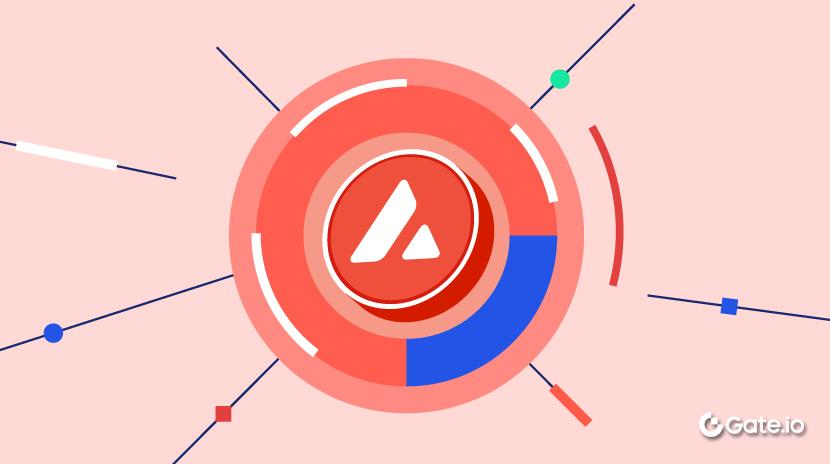Pesquisador da Delphi: O Caminho da Evolução e a Captura de Valor da Economia de Agentes de IA
Um quadro para entender o sucesso da internet é vê-lo do ponto de vista da coordenação. Fundamentalmente, podemos atribuir o sucesso das aplicações de internet mais valiosas à sua capacidade de coordenar as intenções humanas de forma mais refinada. A Amazon coordena intenções comerciais; o Facebook, o Instagram e o Twitter coordenam intenções sociais; a Uber e a Doordash coordenam intenções de transporte e entrega, enquanto o Google coordena a intenção de procurar informações, correspondendo consultas a conteúdo online relevante.

Uma tendência óbvia é que os agentes de IA representam a próxima evolução lógica da coordenação em larga escala. Enquanto hoje, nossas "intenções" são alcançadas por meio de pesquisa, download e interação com aplicativos na internet, é razoável supor que em breve, nossas "intenções" serão executadas por uma rede de agentes de IA que trabalham em nosso nome.
Importante, esta mudança para uma economia coordenada por agentes levanta uma questão fundamental: que tipo de infraestrutura irá finalmente apoiar esta evolução?
Neste artigo, vamos (1) explorar os casos de alta e baixa para agentes de IA que transacionam via criptomoeda; (2) delinear o caminho lógico da adoção de agentes de IA; e (3) investigar a captura de valor nesta economia emergente de agentes.
O Papel das Criptomoedas
Houve muita especulação sobre por que a blockchain poderia se tornar a base econômica para a economia de agentes. No entanto, como na maioria dos verticais cripto emergentes, o caso do touro foi reduzido a uma narrativa popular e simplificada. Hoje, um argumento comum sugere que "os agentes não podem possuir contas bancárias, então mudarão para carteiras de criptomoedas", o que parece ignorar a proposição de valor fundamental das criptomoedas. O acesso não é o problema; os agentes podem possuir totalmente contas bancárias sob estruturas FBO (For Benefit Of). Por exemplo, empresas como o PayPal já gerenciam milhões de subcontas sob uma única estrutura FBO. Eles poderiam gerenciar agentes de IA da mesma forma: cada agente tem sua subconta virtual, rastreada pela plataforma, mas agrupada no nível bancário. Notavelmente, a Stripe recentemente anunciou que irá adicionar suporte para transações de agentes sob uma estrutura semelhante.

https://twitter.com/jeff_weinstein/status/1857161398943642029
Além disso, o argumento de que 'isto mina a autonomia dos agentes de IA' é um pouco simplista. Em última análise, alguém irá gerir as chaves privadas dos agentes de IA, de modo que estes não são totalmente autónomos de qualquer maneira. Embora teoricamente, as chaves privadas dos agentes de IA possam ser armazenadas num Ambiente de Execução Confiável (TEE), isto é tanto operacionalmente caro como impraticável. Além disso, mesmo que os agentes tivessem 100% de autonomia, isso não traria liberdade substancial, já que eles, em última análise, precisam servir os humanos.
Em vez disso, os verdadeiros pontos problemáticos que impulsionam as transações de agentes em domínios tradicionais e blockchain são os seguintes:
- Tempo de Liquidação: Os pagamentos tradicionais enfrentam atrasos de vários dias e limitações de processamento em lotes, especialmente em transações transfronteiriças. A falta de liquidação instantânea prejudica significativamente os agentes de IA que necessitam de respostas em tempo real para operar de forma eficiente. Solução Blockchain: As blockchains públicas fornecem uma finalização de liquidação quase instantânea através de transações atômicas, possibilitando interações em tempo real entre agentes sem risco de contraparte. Essas transações são liquidadas 24/7, sem restrições geográficas ou horários bancários.
- Acessibilidade Global: A infraestrutura bancária tradicional cria barreiras significativas para os desenvolvedores globais, com 70% dos desenvolvedores fora dos EUA enfrentando desafios no uso de canais de pagamento. Solução blockchain: A infraestrutura pública blockchain é inerentemente sem fronteiras e sem permissão, permitindo a implantação global de agentes sem a necessidade de bancos tradicionais. Qualquer pessoa com acesso à internet pode participar da rede, sem restrições geográficas.
- Economia de Unidades: A estrutura de taxas dos sistemas de pagamento tradicionais (taxas fixas + 3%) torna economicamente inviáveis as microtransações, criando barreiras para agentes de IA que requerem transações frequentes de pequeno valor. Solução em Blockchain: Blockchains de alto desempenho permitem microtransações a um custo mínimo, permitindo que agentes realizem transações de alta frequência e baixo valor de forma eficiente.
- Acessibilidade técnica: A infraestrutura de pagamento tradicional não possui APIs programáveis e exige conformidade estrita com o PCI. Sistemas projetados para interação humana por meio de formulários da web e inputs manuais criam barreiras significativas para operações automatizadas de agentes. Solução blockchain: A infraestrutura blockchain oferece acesso programável nativo por meio de APIs padronizadas e contratos inteligentes, eliminando a necessidade de formulários ou inputs manuais. Isso facilita interações automatizadas confiáveis sem os custos adicionais de conformidade com o PCI.
- Escalabilidade Multiagente: Os sistemas tradicionais têm dificuldade em gerir vários agentes de IA que requerem fundos e contas independentes, o que leva a relações bancárias dispendiosas e a requisitos contabilísticos complexos. Solução Blockchain: Os endereços de blockchain podem ser facilmente gerados de forma programática, permitindo a segregação eficiente de fundos e arquiteturas multiagente. Os contratos inteligentes proporcionam uma gestão flexível e programável de fundos, sem os custos administrativos da banca tradicional.
Caminho de adoção
Embora as vantagens técnicas da criptomoeda sejam de fato convincentes, elas não são necessariamente requisitos para a onda de comércio de agentes intermediários. Apesar das limitações dos métodos de pagamento tradicionais, eles se beneficiam de efeitos de rede massivos. Qualquer nova infraestrutura deve oferecer vantagens convincentes, não apenas melhorias marginais, para impulsionar a adoção.
Olhando para o futuro, antecipamos que a adoção de agentes se desenrolará em três fases distintas, sendo que cada fase trará níveis progressivamente mais elevados de autonomia para os agentes:
Fase 1: Transações entre Humanos e Agentes (Presente)
Atualmente estamos na primeira fase. O recurso “Comprar com Pro” recentemente lançado pela Perplexity fornece um vislumbre de como os humanos estão começando a transacionar com agentes de IA. O sistema deles integra bots de IA com cartões de crédito tradicionais e carteiras digitais como o Apple Pay, permitindo-lhes pesquisar produtos, comparar opções e fazer compras em nome dos utilizadores.
Na teoria, este processo poderia usar criptomoeda, mas não existem vantagens claras nesta fase. Como Luke Saunders apontado, a necessidade de criptomoeda resume-se ao nível de autonomia exigido pelos agentes. Atualmente, esses agentes carecem de autonomia suficiente. Eles não gerenciam recursos de forma independente, assumem riscos ou pagam por outros serviços; eles simplesmente atuam como assistentes de pesquisa que ajudam antes que os usuários tomem decisões. Somente nas fases subsequentes de adoção de agentes é que as limitações dos canais tradicionais se tornam aparentes.
Fase 2: Transações entre Agentes e Humanos (Emergentes)
A próxima fase envolve agentes iniciando autonomamente transações com humanos. Isso já está acontecendo em pequena escala: sistemas de negociação de IA executam transações, sistemas de casa inteligente compram eletricidade a preços ótimos por meio de preços baseados no tempo e sistemas de gerenciamento de inventário automatizados fazem pedidos de reposição com base em previsões de demanda.
Com o tempo, podem surgir cenários de negócios mais complexos entre humanos e agentes, tais como:
- Pagamentos e Banca: Otimização de pagamentos de contas e fluxo de caixa, detecção de fraudes, tratamento de disputas, categorização automática de despesas e maximização de juros, reduzindo taxas através de gestão inteligente de contas.
Compras e necessidades do consumidor: rastreamento de preços e compras automáticas, otimizações de assinatura, reivindicações de reembolso e gerenciamento inteligente de inventário doméstico.
Viagens e Transporte: Rastreamento de preços de voos e remarcação, gestão inteligente de estacionamento, otimização de compartilhamento de caronas e processamento automatizado de sinistros de seguro de viagem.
Gestão Doméstica: Controlos inteligentes de temperatura, agendamentos de manutenção preditiva e reposição automatizada de consumíveis com base em padrões de utilização.
- Finanças pessoais: otimização automática de impostos, reequilíbrio de carteira e negociações de contas com prestadores de serviços.
À medida que os agentes começam a gerir recursos e a tomar decisões autonomamente, as limitações dos métodos tradicionais tornar-se-ão mais evidentes. A maioria destas transações poderia ainda teoricamente operar sob frameworks como o Stripe's Agent SDK. No entanto, esta fase marca o início de uma mudança fundamental: a otimização em tempo real pelos agentes impulsionará uma transição de tarifas de serviço mensais ou anuais para preços ajustados com precisão baseados na utilização. Num mundo onde os agentes se tornam cada vez mais autónomos, eles terão que pagar por recursos como poder de computação, taxas de consulta de API, custos de inferência LLM, taxas de transação e outros serviços baseados na utilização.
À medida que as ineficiências dos modelos de pagamento com cartão se tornam mais evidentes, a criptomoeda passa de oferecer melhorias marginais para proporcionar uma vantagem transformadora sobre os canais tradicionais.
Fase 3: Transações de Agente para Agente (Futuro)
A fase final representa uma mudança na forma como o valor flui dentro da economia digital. Os agentes transacionarão diretamente com outros agentes, criando redes comerciais autônomas complexas. Embora esforços similares tenham surgido em cantos especulativos do mercado de criptomoedas, casos de uso mais sofisticados surgirão, incluindo:
- Mercados de Recursos: Agentes de computação negociam a colocação de dados com agentes de armazenamento, agentes de energia negociam a capacidade da rede com agentes de consumo, agentes de largura de banda leiloam a capacidade de rede para agentes de entrega de conteúdo, e agentes de recursos em nuvem conduzem arbitragem em tempo real entre provedores.
- Otimização de Serviço: Os agentes de banco de dados negociam serviços de otimização de consulta com agentes de computação, os agentes de segurança compram inteligência de ameaças de agentes de monitoramento, os agentes de cache trocam espaço com agentes de previsão de conteúdo, e os agentes de balanceamento de carga coordenam com agentes de escalonamento.
- Conteúdo e Dados: Agentes de criação de conteúdo licenciam ativos de agentes de gestão de mídia, agentes de dados de treinamento negociam com agentes de otimização de modelos, agentes de gráficos de conhecimento negociam informações verificadas e agentes de análise compram dados brutos de agentes de coleta.
- Operações Comerciais: Os agentes da cadeia de abastecimento coordenam-se com os agentes de logística, os agentes de inventário negociam com os agentes de aquisição e os agentes de serviço ao cliente contratam com agentes de suporte especializados.
- Serviços Financeiros: agentes de avaliação de risco negociam seguros com agentes de subscrição, agentes financeiros otimizam retornos com agentes de investimento, agentes de pontuação de crédito vendem verificação para agentes de empréstimo, e agentes de liquidez coordenam-se com agentes de criação de mercado.
Esta fase requer uma infraestrutura fundamentalmente nova projetada para o comércio entre máquinas. Os sistemas financeiros tradicionais dependem da verificação manual de identidade e supervisão, o que inerentemente impede uma economia de agente para agente. Em contraste, as stablecoins - com sua programabilidade, natureza sem fronteiras, liquidação instantânea e suporte a microtransações - se tornarão uma infraestrutura essencial.
Captura de valor na economia do agente
A evolução em direção a uma economia de agentes inevitavelmente criará vencedores e perdedores. Neste novo paradigma, várias camadas da pilha técnica surgem como pontos de captura de valor-chave:
- Camada de interface: Semelhante à concorrência para os utilizadores finais em ambientes tradicionais de pagamento, os jogadores irão competir pela camada de interface onde os utilizadores expressam as suas 'intenções de agente'. Estas interfaces evoluirão para plataformas abrangentes que integram funcionalidades de identidade, autenticação e transação. Os principais intervenientes incluem: Fabricantes de dispositivos como a Apple, com capacidades de segurança de hardware e integração de identidade. Aplicações super fintech para consumidores como o PayPal e o Cash App da Block, que aproveitam grandes bases de utilizadores e redes de pagamento em circuito fechado. Interfaces nativas de IA como ChatGPT, Claude, Gemini e Perplexity, expandem os seus chatbots para transações de agentes. Carteiras de criptomoedas existentes, que aproveitam a sua infraestrutura nativa de criptomoedas, embora a sua vantagem possa ser menos significativa.
- Camada de Identidade: Um desafio chave na economia de agentes é distinguir participantes humanos de máquinas. Em um mundo onde os agentes gerenciam desproporcionalmente recursos valiosos e tomam decisões autônomas, isso se torna cada vez mais crítico. Embora a Apple tenha uma vantagem aqui, a Worldcoin está pioneirando soluções intrigantes com seu hardware Orb e protocolo World ID. Ao fornecer uma prova verificável de humanidade, a Worldcoin poderia se tornar indiretamente um vencedor significativo ao oferecer aos desenvolvedores uma plataforma para garantir que todos os usuários sejam humanos.
- Camada de Liquidação (Blockchain): Se a blockchain substituir os canais tradicionais como a camada de liquidação padrão para agentes de IA, as blockchains que facilitam transações de agentes capturarão um valor significativo.
- Camada de Emissão de Stablecoin: Considerando os efeitos da rede de liquidez, é razoável assumir que as stablecoins usadas pelos agentes capturarão valor. O USDC parece estar bem posicionado, já que a Circle está a lançar uma carteira controlada pelo desenvolvedor e infraestrutura de stablecoin para apoiar transações de agentes.
No final, os maiores perdedores podem ser as aplicações que não se adaptam rapidamente à economia de agentes. Num mundo onde os agentes (não humanos) conduzem as transações, os tradicionais fossos desaparecerão. Os humanos tomam decisões com base em preferências subjetivas, lealdade à marca e experiência do utilizador, mas os agentes priorizam o desempenho e os resultados económicos. Isto significa que, à medida que as linhas se confundem entre aplicações e agentes, o valor fluirá para as empresas que oferecem os serviços mais eficientes e de alto desempenho, não para aquelas com as melhores interfaces de utilizador ou marcas mais fortes.
À medida que a concorrência muda de diferenciação subjetiva para métricas de desempenho objetivas, os utilizadores (humanos e agentes) são os que mais beneficiam.
Aviso Legal:
- Este artigo é reproduzido deForesightnews. Os direitos de autor pertencem ao autor original [Robbie Petersen, um pesquisador na Delphi Digital]. Se tiver alguma objeção à reimpressão, por favor contacte o Gate Aprenderequipa, que lidará prontamente com a questão de acordo com os procedimentos relevantes.
- Aviso legal: As opiniões expressas neste artigo são exclusivamente do autor e não constituem qualquer conselho de investimento.
- Os artigos em outros idiomas são traduzidos pela equipa Learn da gate e não podem ser copiados, distribuídos ou plagiados, salvo indicação em contrário.
Artigos relacionados
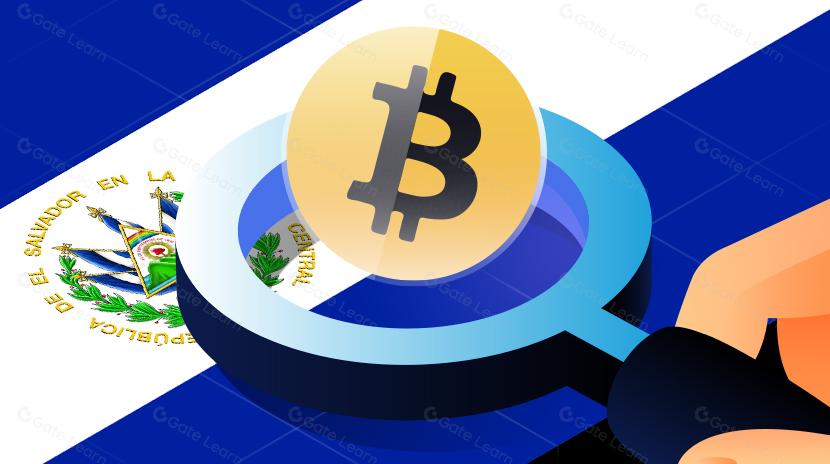
Utilização de Bitcoin (BTC) em El Salvador - Análise do Estado Atual
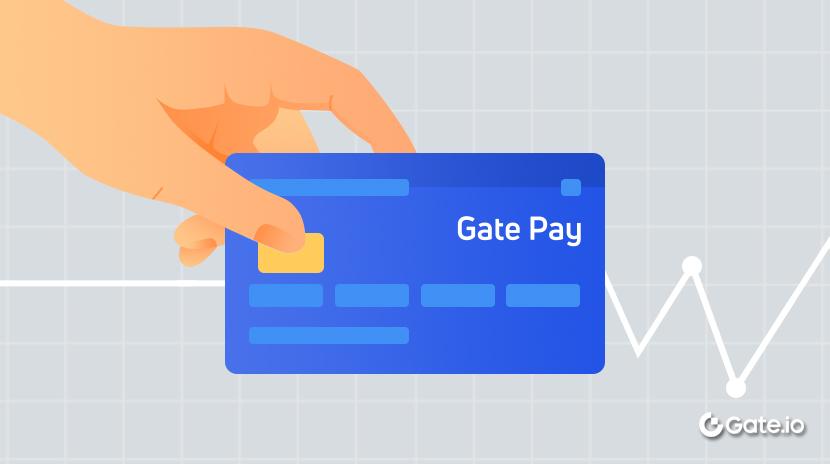
O que é o Gate Pay?
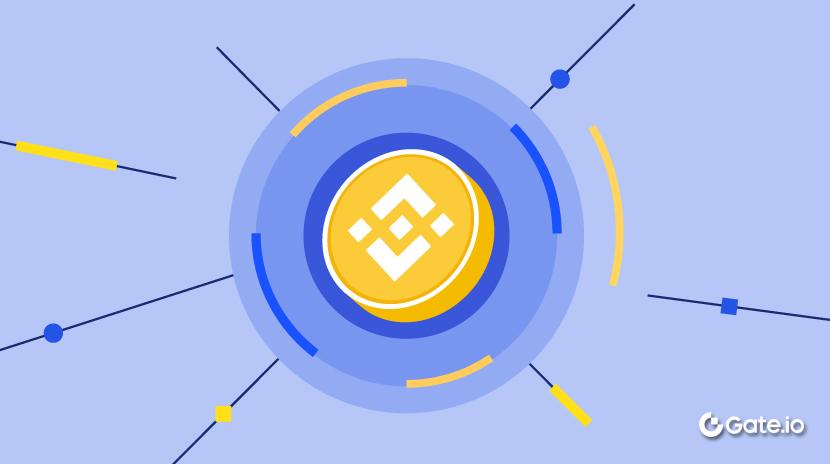
O que é o BNB?
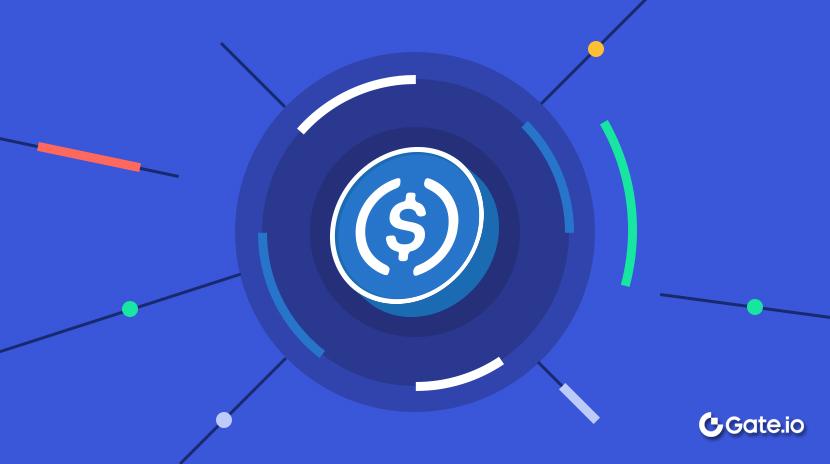
O que é o USDC?

O que é Coti? Tudo o que precisa saber sobre a COTI
